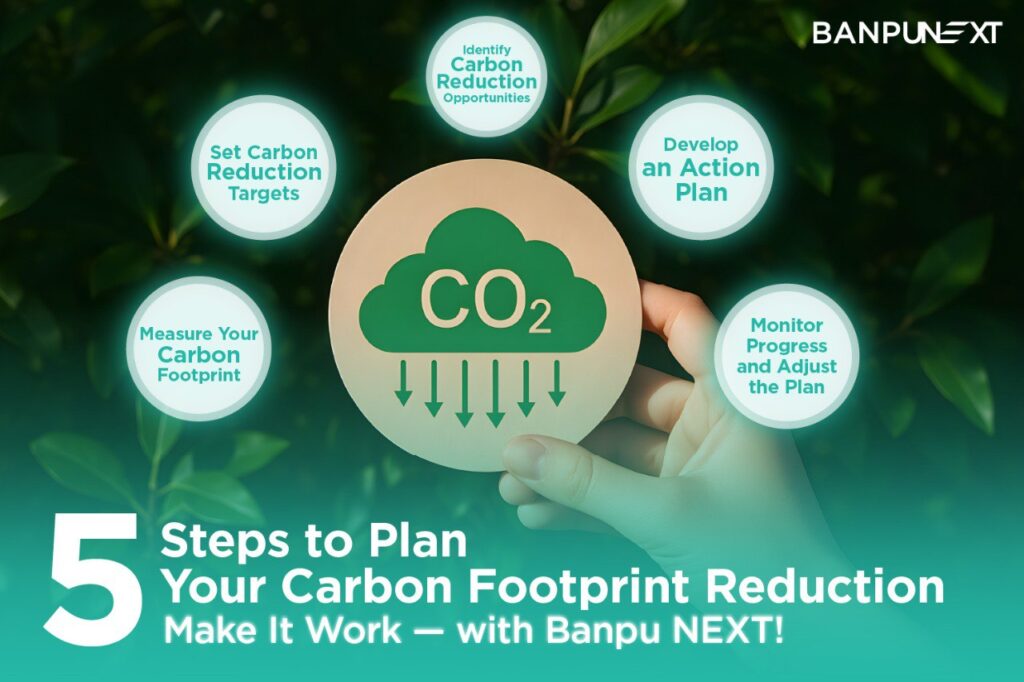Achieving Net Zero begins with understanding the volume and sources of greenhouse gas emissions within your organization. Accurate baseline data helps set realistic targets, identify key emission sources, and avoid ineffective investments. Conversely, incorrect calculations may lead to failed strategies and distorted results.
Internationally Recognized Standards and Calculation Frameworks
Carbon footprint calculation should be based on globally accepted standards to ensure reliability and consistency. The main standards applied worldwide include:
GHG Protocol: Principles and Scope
The Greenhouse Gas (GHG) Protocol is the most widely recognized standard for calculating and reporting greenhouse gas emissions, which divides emissions into three scopes:
- Scope 1: Direct GHG emissions from activities such as on-site fuel combustion, company-owned vehicle usage, and refrigerant leaks.
- Scope 2: Indirect GHG emissions from purchased energy, including electricity, heat, and steam.
- Scope 3: Other indirect GHG emissions across the supply chain, including raw material sourcing, transportation, product usage, and waste disposal.
ISO 14068-1: Carbon Neutrality Standard
ISO 14068-1 outlines principles, requirements, and guidelines for achieving and demonstrating carbon neutrality, covering:
- Definitions and scope of carbon neutrality
- Methods for calculating and measuring greenhouse gas emissions
- Carbon reduction and offset strategies
- Reporting and verification requirements
Other Relevant Standards
- PAS 2060: A standard set by the British Standards Institution for demonstrating carbon neutrality
- Science-Based Targets initiative (SBTi): A framework for setting greenhouse gas reduction targets based on scientific principles
- Thailand’s Standards: Certification of corporate carbon footprints by Thailand’s Greenhouse Gas Management Organization (TGO)
Systematic Carbon Footprint Calculation Process
Accurately calculating your carbon footprint involves 4 key steps:
1. Define Scope and Collect Data
- Define organizational boundaries: Choose either operational or financial control methods or equity share approach.
- Define operational boundaries: Specify which activities are included in Scope 1, 2, and 3.
- Data collection: Gather data on fuel, electricity, and other resource usage.
- Data quality assessment: Ensure completeness, accuracy, and reliability of data.
2. Use Appropriate Emission Factors
- Select emission factors from reliable sources: For example, data from the Intergovernmental Panel on Climate Change (IPCC), Department for Environment, Food & Rural Affairs (DEFRA), Environmental Protection Agency (EPA), or Thailand Greenhouse Gas Management Organization (TGO).
- Consider regional and industry specifics: Use emission factors tailored to specific countries or industries when available to improve calculation accuracy.
- Update emission factors: Ensure you are using the latest values to reflect technological advancements and process changes.
3. Calculation and Accuracy Verification
- Calculate emissions: Use the formula: Activity volume × Emission factor = Greenhouse gas emissions.
- Convert to CO₂ equivalent (CO₂e): Apply the appropriate Global Warming Potential (GWP) values.
- Consolidate emissions across sources: Create an emissions inventory categorized by scope.
- Verify accuracy: Conduct internal and external audits to confirm the correctness of the calculations.
4. Analysis and Reporting
- Identify major emission sources: Pinpoint activities that contribute the most to emissions.
- Compare with previous periods: Evaluate trends and changes in emissions.
- Prepare reports: Generate carbon footprint reports that align with chosen standards.
- Communicate results: Share findings transparently with stakeholders.
Calculating your carbon footprint is just the beginning of your journey towards Net Zero. Organizations with accurate data and strong strategies will be able to reduce greenhouse gas emissions effectively and sustainably.
Banpu NEXT: Your Comprehensive Net Zero Consulting Partner
Banpu NEXT, a leading Net Zero Solutions provider in the Asia-Pacific region, is here to support your organization in carbon footprint calculation and Net Zero strategy development. Our end-to-end Net Zero advisory services include accurately calculating current greenhouse gas (GHG) emissions, designing a Net Zero roadmap with a clear implementation plan, executing decarbonization initiatives and managing carbon credit programs, tracking and reporting results with continued optimization, and assisting with ESG disclosures and ratings to demonstrate measurable progress toward your Net Zero goals.
Contact Banpu NEXT to Begin Your Journey Toward Net Zero
Banpu NEXT is ready to partner with your organization to achieve Net Zero through comprehensive consulting and a wide range of clean energy solutions.







